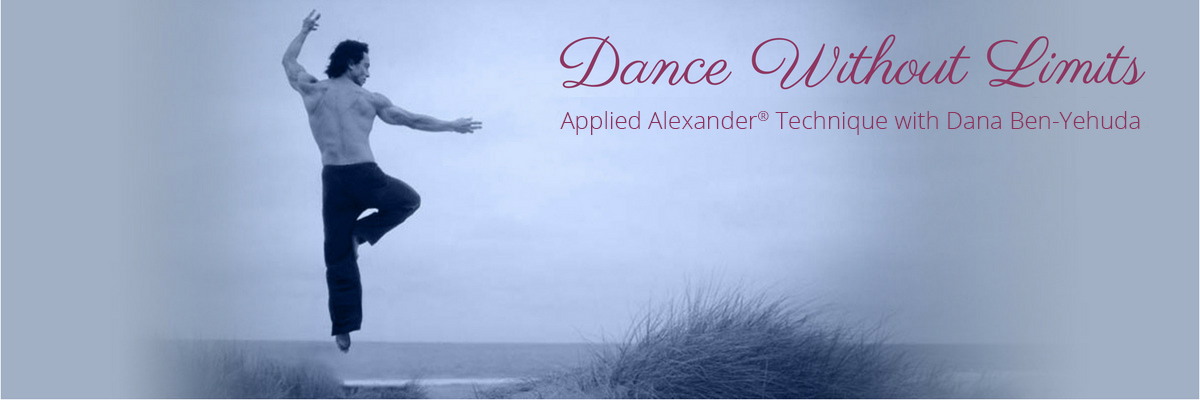Study Results Show 85% Reduction in Back Pain
The American Society for the Alexander Technique announced:
A clinical trial published in the British Medical Journal show Alexander Technique lessons are effective and provide long-term benefit.
As reported by the British Medical Journal on August 19, 2008, back pain sufferers who took 24 lessons in the Alexander Technique had 85% less back pain, one year after the study began. The number of days in pain fell to only three per month, vs. 21 days in pain in the control group. The average number of activities limited by back pain had fallen by 42%. Six lessons followed by exercise were about 70% as effective as 24 lessons.
There were zero adverse effects by any of the participants who received Alexander Technique lessons.
Click here to download a copy of the press release in PDF format.
Or read it here, online.
American Society for the Alexander Technique
September 2008 Press Release Relief for Chronic Back Pain Sufferers
Clinical Trial published in the British Medical Journal show
Alexander Technique lessons are effective and provide long-term benefit
See the British Medical Journal study online
The back pain epidemic can be reduced by a practical method of self-care that is taught in individualized lessons. Despite a growing array of sophisticated drugs, diagnostics, physical therapies, and surgical techniques, millions of Americans battling back pain still suffer. While most doctors agree that posture and movement play an important part in causing or aggravating back pain, there is little consensus on how to get people into balance and out of pain.
This randomized controlled trial is one of the few major studies to show significant long-term benefits for patients with chronic non-specific low-back pain. 579 patients were involved in a multi-center clinical trial lead by GP (General Practice) researcher Professor Paul Little, University of Southampton, and GP Professor Debbie Sharp, Bristol University, and funded by the Medical Research Council and the National Health Service Research and Development Fund.
Trial results clearly show that 24 one-to-one lessons in the Alexander Technique led to important patient improvement in function, quality of life and reduction of days in pain. One year after the trial started and following 24 Alexander Technique lessons the number of days in pain was only three per month compared with 21 days in pain in the control group. The average number of activities limited by back pain had fallen by 42%.
The trial assessed benefits provided by Alexander Technique lessons, classical massage and normal GP care. Half the patients allocated to each intervention also received a GP prescription for general aerobic exercise (30 minutes of brisk walking or the equivalent each day). Of all the approaches tested, 24 Alexander Technique lessons, at least half taken within the first three months of the trial, proved to be the most beneficial.
Significantly, a series of six Alexander Technique lessons followed by GP-prescribed exercise was about 70% as beneficial as 24 Alexander Technique lessons alone.
There were no adverse events recorded by any of the participants allocated to the series of 6 or 24 Alexander Technique lessons.
Since the effect of massage on activities was no longer significant by one year, whereas the effect of Alexander Technique lessons was maintained, the trial authors concluded that the long-term benefits of taking Alexander Technique lessons are unlikely to be due to placebo effects of attention and touch and more likely to be due to active learning of the Technique.
The Alexander Technique is an educational method that can be learned by anyone, that helps people recognize, understand, and avoid poor habits affecting postural tone and neuromuscular coordination. Lessons involve an individualized approach designed to provide lifelong skills for self-care that can lead to a wide variety of benefits.
The price of back pain
Back pain is the leading cause of disability in Americans under 45 years old. 3
In 2005 Americans spent $85.9 billion looking for relief from back and neck pain through surgery, doctor’s visits, X-rays, MRI scans and medications, up from $52.1 billion in 1997, according to a study in the Feb. 13 issue of the Journal of the American Medical Association (JAMA). That money hasn’t helped reduce the number of sufferers; in 2005, 15 percent of U.S. adults reported back problems-up from 12 percent in 1997.4
3 http://www.painfoundation.org/page.asp?file=Newsroom/PainFacts.htm 4 http://www.newsweek.com/id/110767
What happens in a lesson?
In an Alexander lesson, the teacher observes the posture and movement of the student and helps to improve their coordination. The teacher uses gentle hands-on guidance together with verbal explanation and demonstration. Sitting, standing, bending, walking and daily activities are practiced in a lesson. Students learn to attend to head poise and lengthening of the spine in a way that facilitates normal postural tone and de-compresses vertebrae and discs.
Lessons are tailored to the individual’s needs and capabilities and are applied to each student’s daily activities. Students are usually asked to remove shoes, but otherwise remain fully clothed.
The American Society for the Alexander Technique (AmSAT)
Tel: (800) 473-0620 Media: amsatmedia (at) amsat (dot) ws Office: info (at) amsat (dot) ws www.amsat.ws
The AmSAT Mission: To define, maintain and promote the Alexander Technique at its highest standard of professional practice and conduct.
Alexander Technique in Mt. View/Palo Alto/Silicon Valley
Dana Ben-Yehuda, M.AmSAT, is a Certified Alexander Teacher and also serves as AmSAT’s Media Spokesperson. She has been in private practice in the Mountain View – Palo Alto area since 2002.
Contact: Dana Ben-Yehuda, M.AmSAT email: dbenyehuda (at) comcast (dot) net phone: 650-964-4308
#####
